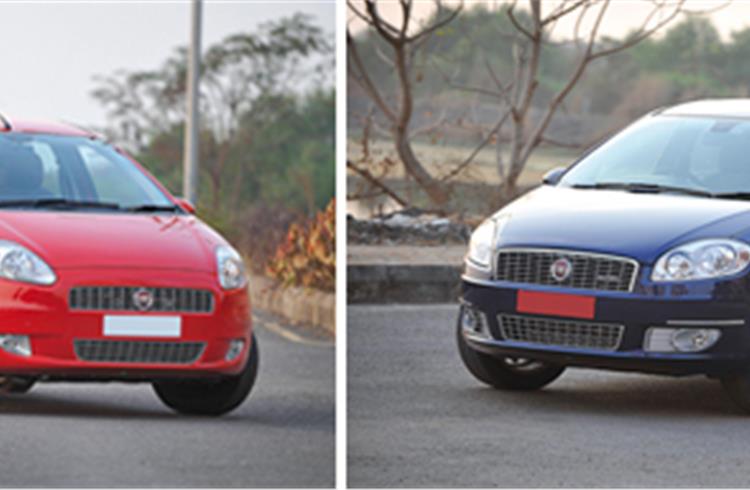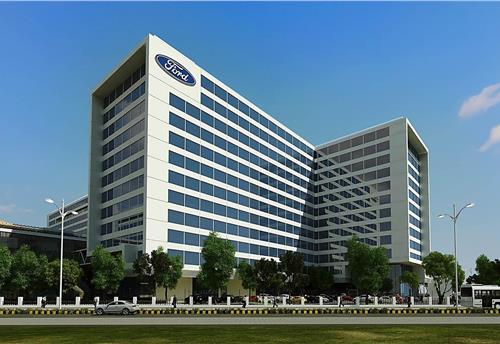Tata, Fiat part ways on joint dealerships
When news came in early May that Tata Motors and Fiat had called off their six-year-old joint dealership venture, it wouldn’t have come as a surprise to industry.
After the announcement of the tie-up in 2006, to much press attention at the Auto Expo, things have not worked out the way the partners wanted. In the very first year, 2006-07, the plan was reportedly to sell 3,000 cars rising to 100,000 in five years’ time. But only 2,234 units were sold in the first year. A total of 178 dealerships in 129 cities were selling the two Fiat-branded cars when the tie-up was called off. And only 1,000 Fiat brand cars were sold in April 2012. As part of the Tata-Fiat joint venture, a full-fledged plant was set up at Ranjangaon, Pune where Fiat’s Linea and Punto and the Tata Vista and Manza were to roll out on flexible production lines. The JV was to make 1.3-litre diesel engines for supply to the Maruti Suzuki which uses these engines for the Swift and SX4. In addition, Rio – the compact SUV from Premier Ltd – will debut with a Bharat Stage IV-compliant variant, equipped with a Fiat engine soon.
A year or so ago, the cracks in the joint venture for dealerships were clearly visible. Global management consulting firm McKinsey was roped in to suggest ways to rescue the ailing joint retailing initiative. Clearly, not enough cars were being sold to make the joint selling a viable proposition. So the parting of ways became simply a matter of time. Last year, Fiat sold barely 16,073 units.
The parting of ways between both partners has also to be seen against the backdrop of Fiat’s own global experience. Fiat now owns Chrysler and the company under the helm of Sergio Marchionne has tried to restructure Fiat and turnaround a company that has not doing well in its home market and in Europe as well.
 |
So the focus has been on the US where the new Fiat 500 was launched (the car did not really sell in large numbers in India) and in China. Firstly, Fiat has a new Chinese partner, Guangzhou Automobile, and a plant in the Hunan province slated to begin production in June of the Fiat Viaggio compact saloon (shown at last month’s Beijing Show) that will go on sale in China in the third quarter. The Viaggio was designed for China with a lengthened back seat (for chauffeur-driven buyers).
To all purposes, it would appear that for the moment, India’s not on Fiat’s radar. Fiat has said a separate company will market the Fiat models but getting dealers to sign on and stabilise would take at least 18 months. Fiat hopes to have 20 dealers in the first phase. Its existing models face a lot of competition and so Fiat must re-strategise to pull in the numbers. Going into Tier 2 and Tier 3 towns makes eminent sense as there are potential buyers out there, and the Fiat name does have a cache of sorts in these areas. Above all, Fiat must resolve service issues, its Achilles' heel so far. With margins in retailing falling, the money is in aftersales service, and Fiat’s track record has not been very good here.
Making engines and transmissions has been the successful part of the joint venture and the swing to diesel will only continue to benefit Fiat India Automobiles’ business. According to an industry consultant, Fiat registered profits in India last year, despite lacklustre performance in the market. This hasn’t been officially confirmed. “The business is mainly from manufacturing. It’s unfortunate that Fiat has not been able to be successful in India despite being a technologically-advanced company,” says the analyst.
In January, the company inked a three-year agreement to supply 100,000 engines to Maruti Suzuki. There may not be many Fiats on the road but Fiat-made engines are the power behind many hatchbacks and saloons.
BRIAN DE SOUZA
TIMELINE OF THE TATA-FIAT PARTNERSHIP
January 13, 2006: Tata Motors and Fiat announce a joint venture at the 8th Auto Expo to jointly manufacture, sell and service cars in India.
 |
August 23, 2010: First indication of distress in the partnership. Tata Motors CEO Carl Peter Foster is not pleased with JV volumes.
February 16, 2011: Fiat CEO Sergio Marchionne tells Wall Street Journal he is not happy with the JV and that there is a need to re-dimension the deal.
June 14, 2011: Tata Group chairman Ratan Tata says the joint venture is not active, must be critically examined to optimise its potential.
January 12, 2012: Fiat says it will set up dealerships of its own and move away from co-branded showrooms in India’s top 20 cities by 2015.
May 2, 2012: The two companies formally announce the end of the distribution tie-up. However, joint manufacturing at Fiat’s Ranjangaon factory and the sharing of engines and powertrains will continue.
RELATED ARTICLES
Uniproducts India targets 15% growth till FY2027, eyes new EV OEMs for NVH parts
The Noida-headquartered company, which is a leading manufacturer of roof liners, floor carpets, sound insulation materia...
Ford to build more EV software capability at Chennai tech hub
Ford Business Solutions India, which currently employs 12,000 personnel set to add 3,000 more; Ford, which is known to b...
ASK Automotive to set up JV with Aisin to sell aftermarket parts for cars
Ask Automotive will have 51% of the equity of the joint venture to be set up with Aisin Asia (Thailand) Company and Aisi...





 By Autocar Pro News Desk
By Autocar Pro News Desk
 15 May 2012
15 May 2012
 3339 Views
3339 Views









